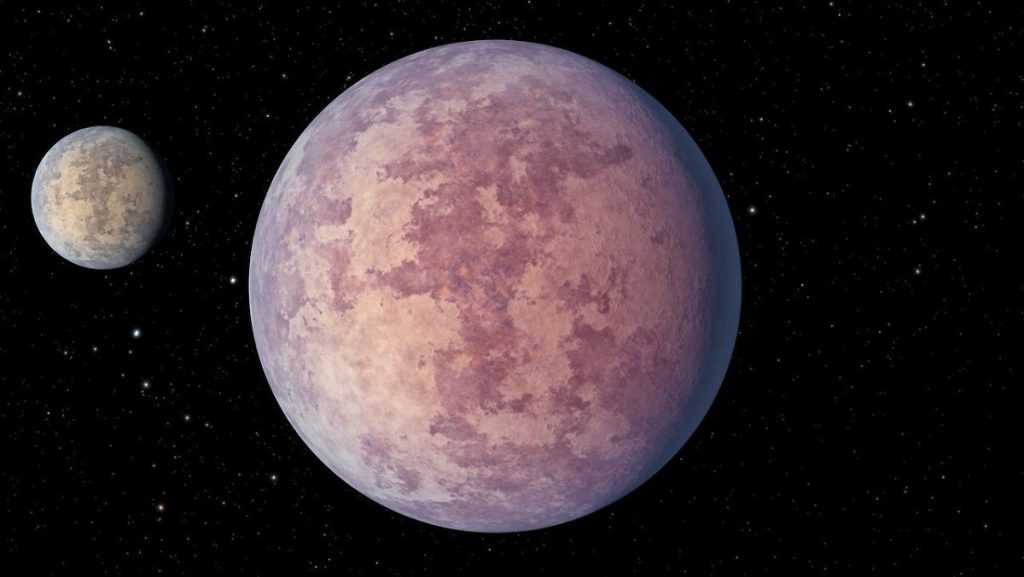Only 33 light years
Two super-terrestrial planets have been discovered near us
06/20/2022, 12:15 PM (Updated)
A special star system has been discovered in the galactic neighborhood of the Sun: it is home to the so-called super-Earth. And conditions are favorable to closely study the atmosphere of rock giants. Could there be life there too?
International research team has a new team A planetary system with two super-Earths has been discovered. The special thing about this: The multiple planet system is only 33 light-years from Earth, and therefore one of the closest known to date. Large rocky planets outside our solar system are called super-Earths. However, this does not say anything about whether these planets – like Earth – can also accommodate life.
And in this case, the researchers also consider it completely unlikely: because the two large rocky worlds orbit in very narrow orbits around their star, a cold dwarf star called HD 260655. However, it is hot enough to warm the surface temperatures of the Earth. The two planets have an estimated temperature of 284 degrees and 435 degrees Celsius. So hot that there is no liquid surface water there – a prerequisite for life as we know it.
The two sister planets HD 260655 b and HD 260655 c were discovered with the help of NASA’s planetary hunter, the “Transiting Exoplanet Survey Satellite” (“TESS”). The researchers were able to use other measurements to determine the size and density of the planets. This confirmed that they are rocky worlds slightly larger and more massive than Earth. Planet B is about 1.2 times the size and Planet C is 1.5 times the size of Earth. Scientists now hope to learn more about the planets – for example, about the composition of their atmospheres.
Good targets for atmospheric studies.
“Due to the relatively high apparent brightness of the host star, the newly discovered planets are excellent targets for further atmospheric studies,” said Karan Mulaverdekhani of the Ludwig Maximilian University Observatory in Munich. Molaverdikhani is part of the international research team that has tracked the super-planets. “At 33 light-years, the planets are relatively close to us. And their star, although smaller than our Sun, is one of the brightest planets in its class.” Good conditions to be able to catch the light from the star, which shines through the atmosphere of these planets, for example with the new James Webb Space Telescope and maybe even the Hubble Space Telescope.
Our Sun has a radius of ten parsecs, which is 33 light-years, more than 400 stars and an ever-increasing number of exoplanets for its immediate neighbours. Planet hunter Tess senses more and more of these exoplanets by searching for so-called transits. A transit (pass) is if a planet passes in front of its star from Earth’s point of view. Then there is the measurable optical loss of the star’s brightness, which in turn provides information about the diameter of the planet. To confirm the discovery, astronomers use other telescopes on Earth. It then measures this slight wobble of the star caused by the gravitational forces of the planets orbiting it – from which the mass of the planets can be calculated.
(This article was first published on Friday, June 17, 2022).

“Total coffee aficionado. Travel buff. Music ninja. Bacon nerd. Beeraholic.”








More Stories
Coral Seeding: Artificial Insemination Makes Coral More Heat Tolerant
Fear, Anger, and Denial: How People Respond to Climate Change – Research
LKH Graz: Using radiation to combat heart arrhythmias